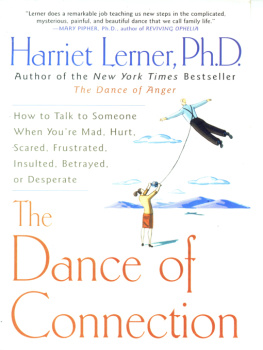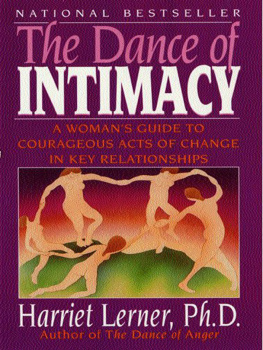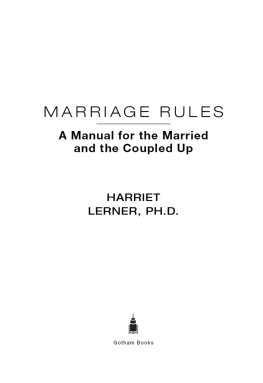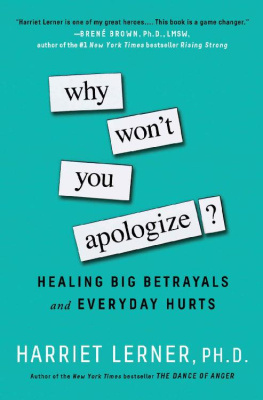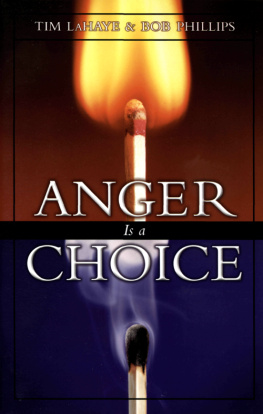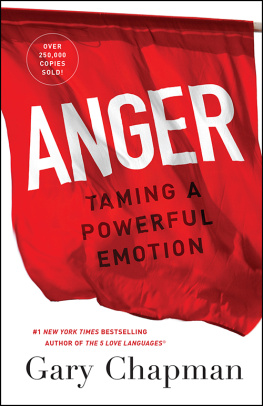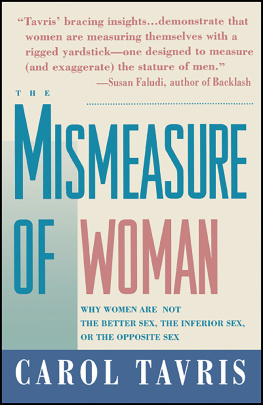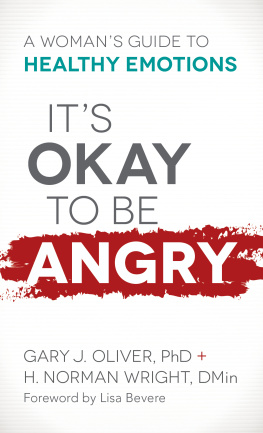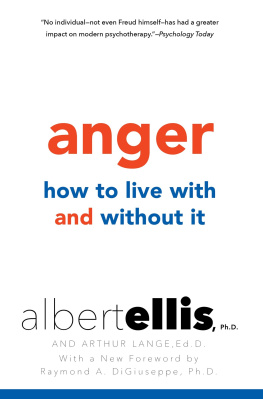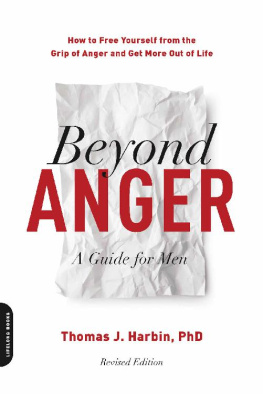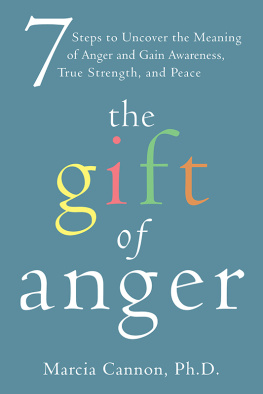For my first family:
My mother, Rose Rubin Goldhor
My father, Archie Goldhor
My sister, Susan Henne Goldhor
And in memory
of my grandparents:
Henne Salkind Rubin and Morris Rubin
Teibel Goldhor and Benny Hazel Goldhor
CONTENTS
NEW INTRODUCTION
TO THE 2014 EDITION OF
THE DANCE OF ANGER
I began writing The Dance of Anger by chance, when a New York publisher unexpectedly offered me an invitation to write a popular book about womens anger. I was a serious and ambitious thinker on the subject, and it seemed like an excellent idea. I had published in scholarly journals, and welcomed the opportunity to extend my reach beyond a professional audience and to try my hand at translating complex theory into useful and accessible prose. The offer came with a $7,000 advance, which, back then, was a veritable fortune dropping from the sky, especially in Topeka, Kansas.
That same publisher fired me, later rehired me, and then fired me again, demanding the money back, which, according to the contract I had signed but not read carefully enough, she had every right to do. This powerful figure in the publishing world decided I had little to say and no talent for saying it. Shaken but not defeated, I worked harder and harder through the years of rejections that followed. I took seriously her criticism that I should get off my professional high horse, put myself into the book, and speak directly to readers, which all of my professional training had taught me not to do.
I will never forget that long stretch of frustration and sorrow, when I sat hunched over a gray typewriter (the speediest technology of the day) with scissors and scotch tape as my cutting-and-pasting editing tools. I couldnt even walk into a bookstore without getting depressed, since there was no shortage of relationship books sitting on the shelves, although none of them took on the subject of womens anger, and few were based on a solid theory of the process of change in relationships. I knew there was a serious need for the book I was writing, but that conviction only left me feeling mystified and doomed. I could have wallpapered the largest room in my big Kansas house with rejection slips.
When years later The Dance of Anger finally saw the light of day, I was convinced that no one would read it except my mother and my five best friends. Never could I have imagined that a book so saddled with bad luck during the Will-I-ever-find-a-publisher? stage would in time enjoy such an astounding reception and reach. It wasnt an instant hit or heavily promoted. It had a small first printing with modest sales. Its readership was built by friends recommending it to friends, family members to family members, therapists to clients and to each other, and so on. A community of readers established itself around the book, the dream of any writer.
Far outnumbering my old rejections slips are the generous and loving messages I continue to receive, now spanning four generations of readers, and leading to this 2014 edition. Im indebted to all my readers, including the countless mental health professionals around the world who have made this book required reading for their clients and students, turning The Dance of Anger into a classic the old-fashioned wayword of mouth. Most of all, Im humbled and grateful to know that The Dance of Anger has helped so many people to change the course of their most important relationships, and that its message continues to resonate.
THE CHALLENGE
OF ANGER
Anger is a signal, and one worth listening to. Our anger may be a message that we are being hurt, that our rights are being violated, that our needs or wants are not being adequately met, or simply that something is not right. Our anger may tell us that we are not addressing an important emotional issue in our lives, or that too much of our selfour beliefs, values, desires, or ambitionsis being compromised in a relationship. Our anger may be a signal that we are doing more and giving more than we can comfortably do or give. Or our anger may warn us that others are doing too much for us, at the expense of our own competence and growth. Just as physical pain tells us to take our hand off the hot stove, the pain of our anger preserves the very integrity of our self. Our anger can motivate us to say no to the ways in which we are defined by others and yes to the dictates of our inner self.
Women, however, have long been discouraged from the awareness and forthright expression of anger. Sugar and spice are the ingredients from which we are made. We are the nurturers, the soothers, the peacemakers, and the steadiers of rocked boats. It is our job to please, protect, and placate the world. We may hold relationships in place as if our lives depended on it.
Women who openly express anger at men are especially suspect. Even when society is sympathetic to our goals of equality, we all know that those angry women turn everybody off. Unlike our male heroes, who fight and even die for what they believe in, women may be condemned for waging a bloodless and humane revolution for their own rights. The direct expression of anger, especially at men, makes us unladylike, unfeminine, unmaternal, sexually unattractive, or, more recently, strident. Even our language condemns such women as shrews, witches, bitches, hags, nags, man-haters, and castrators. They are unloving and unlovable. They are devoid of femininity. Certainly, you do not wish to become one of them. It is an interesting sidelight that our languagecreated and codified by mendoes not have one unflattering term to describe men who vent their anger at women. Even such epithets as bastard and son of a bitch do not condemn the man but place the blame on a womanhis mother!
The taboos against our feeling and expressing anger are so powerful that even knowing when we are angry is not a simple matter. When a woman shows her anger, she is likely to be dismissed as irrational or worse. At a professional conference I attended recently, a young doctor presented a paper about battered women. She shared many new and exciting ideas and conveyed a deep and personal involvement in her subject. In the middle of her presentation, a well-known psychiatrist who was seated behind me got up to leave. As he stood, he turned to the man next to him and made his diagnostic pronouncement: Now, that is a very angry woman. That was that! The fact that he detectedor thought he detectedan angry tone to her voice disqualified not only what she had to say but also who she was. Because the very possibility that we are angry often meets with rejection and disapproval from others, it is no wonder that it is hard for us to know, let alone admit, that we are angry.
Why are angry women so threatening to others? If we are guilty, depressed, or self-doubting, we stay in place. We do not take action except against our own selves and we are unlikely to be agents of personal and social change. In contrast, angry women may change and challenge the lives of us all, as witnessed by the past decade of feminism. And change is an anxiety-arousing and difficult business for everyone, including those of us who are actively pushing for it.
Thus, we too learn to fear our own anger, not only because it brings about the disapproval of others, but also because it signals the necessity for change. We may begin to ask ourselves questions that serve to block or invalidate our own experience of anger: Is my anger legitimate? Do I have a right to be angry? Whats the use of my getting angry? What good will it do? These questions can be excellent ways of silencing ourselves and shutting off our anger.
Let us question these questions. Anger is neither legitimate nor illegitimate, meaningful nor pointless. Anger simply is. To ask, Is my anger legitimate? is similar to asking, Do I have a right to be thirsty? After all, I just had a glass of water fifteen minutes ago. Surely my thirst is not legitimate. And besides, whats the point of getting thirsty when I cant get anything to drink now, anyway?


